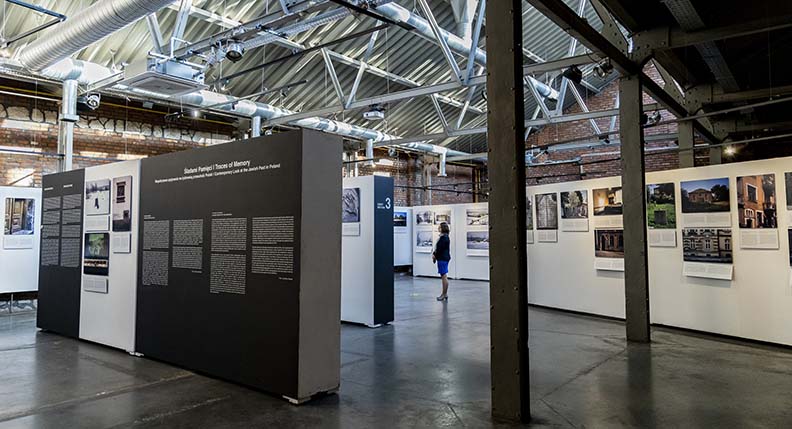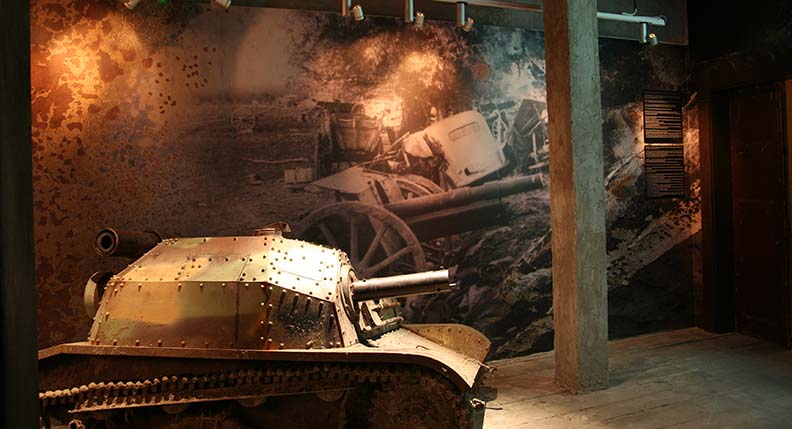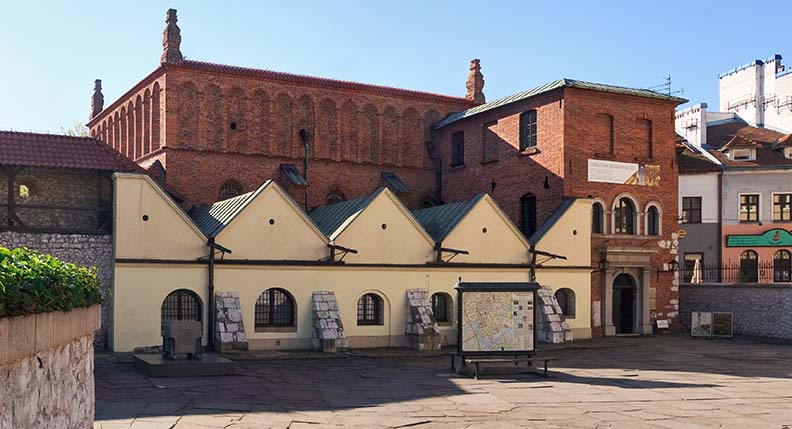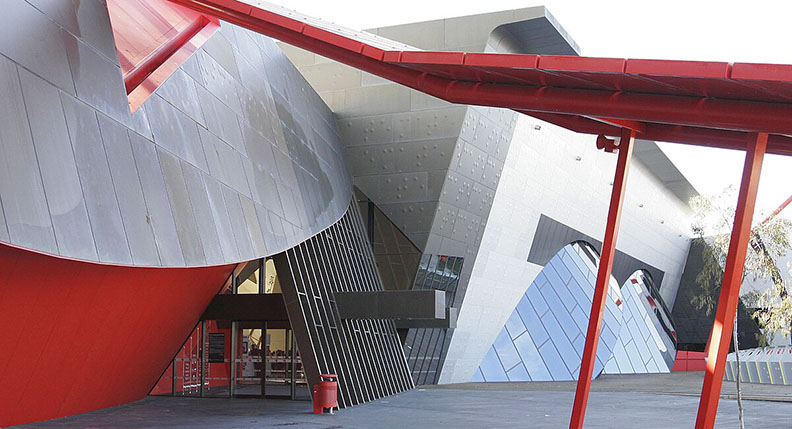My adventure began with a leisurely stroll along the cobbled streets of Kazimierz, a district that has borne witness to centuries of history, upheaval, and resilience. The sun bathed the facades of centuries-old buildings in a warm, golden glow, setting the scene for what would be an unforgettable exploration of Krakow’s Jewish heritage.
A Fascinating Museum: Galicia Jewish Museum

My first stop on this incredible journey was the Galicia Jewish Museum, a place that would prove to be the emotional cornerstone of my visit to Krakow. This museum stands as a poignant tribute to the Jewish presence in the city and offers a window into the profound tapestry of Jewish life and culture in Krakow, spanning from the zenith of the Golden Age to the darkest days of World War II.
Admission: To gain entry to this invaluable repository of history and memory, the admission fee is remarkably reasonable, with an average cost of around 15 PLN for adults.
Opening Hours: The museum is a welcoming haven for knowledge seekers and history enthusiasts, open every day of the week except for Tuesdays.
As I stepped into the museum’s hallowed halls, I was immediately struck by the atmosphere of solemnity and reverence. The exhibits were a visual and narrative odyssey through time, painting an evocative picture of a community whose presence had etched an indelible mark on Krakow’s history.
Photographs, both poignant and powerful, adorned the walls, capturing the faces and moments of a bygone era. Each image whispered stories of life, love, and resilience, offering a glimpse into the vibrant world that once thrived within these streets. It was as if the very essence of the people, their laughter, tears, and aspirations, lingered in the air.
Personal narratives, meticulously preserved, shared the individual stories of Krakow’s Jewish residents. These firsthand accounts, filled with hope, courage, and the indomitable spirit of survival, breathed life into history books and made the past resonate with the present.
One cannot help but be profoundly moved by the immersive experience that the Galicia Jewish Museum offers. It’s a place where history is not confined to pages but comes alive through photographs, letters, and the echoes of laughter and songs from days long past.
A Taste of Tradition: Klezmer-Hois Restaurant
No exploration of Kazimierz would be complete without indulging in its culinary treasures. I was drawn to the charming Klezmer-Hois Restaurant, a cozy eatery where Jewish and Polish culinary traditions melded into a harmonious fusion of flavors. Here, I savored a hearty plate of klezmer-style stuffed cabbage rolls, accompanied by a glass of traditional cherry compote. The meal was a delightful amalgamation of savory and sweet, paying homage to the district’s diverse culinary heritage. Prices at Klezmer-Hois were eminently reasonable, with an average cost of 50-70 PLN for a meal.\
The Synagogue Trail: Exploring Kazimierz’s Spiritual Heritage
Kazimierz, the heart of Krakow’s Jewish heritage, is home to a cluster of historic synagogues, each with its unique tale and significance. During my journey through the region I visited some of the holiest and most poignant places that speak volumes about the richness of Jewish life in Krakow.
Old Synagogue:
My first stop was the Old Synagogue, a place that resonates with centuries of Jewish history. This hauntingly beautiful structure has borne witness to the ebb and flow of Jewish life in Krakow, from moments of great celebration to the darkest of times. To enter this sacred space, one needs to pay an admission fee of approximately 15 PLN, a small price considering the profound experience that awaits.
As I crossed the threshold of the Old Synagogue, I was enveloped by an atmosphere of tranquility and reverence. The synagogue’s architecture, characterized by graceful arches and intricate ornamentation, is a testament to the artistry of generations past. It’s as if the very walls of the synagogue held the echoes of countless prayers, celebrations, and gatherings.
Inside, the ambiance was hushed, allowing visitors to reflect upon the centuries of Jewish life that had unfolded within these walls. The exhibits and artifacts told stories of faith, resilience, and the enduring spirit of a community that had faced both triumphs and tribulations.
Remuh Synagogue and Cemetery:
My journey continued to the Remuh Synagogue and Cemetery, another poignant chapter in the district’s history. This sacred site serves as the final resting place of the illustrious Rabbi Moses Isserles, a revered figure in Jewish scholarship. To explore this hallowed ground, one can expect to pay minimal admission fees, typically around 12 PLN.
The Remuh Synagogue, though smaller in size, exudes a sense of reverence and tradition. Its architectural details and interior reflect the deep connection between faith and community. The adjacent cemetery, with its weathered gravestones dating back centuries, offers a profound glimpse into the lives of those who lived, worshipped, and loved in Kazimierz.
As I stood amidst the gravestones, I couldn’t help but feel a sense of connection to the generations of individuals who had called this place home. Each inscription told a story, and the passage of time had not dimmed the significance of these resting places.
Exploring the Synagogue Trail in Kazimierz was a journey into the heart of Jewish heritage, a poignant reminder of the enduring legacy of a community that had faced adversity with resilience and determination. The minimal admission fees to these sites were a small contribution to the preservation of these invaluable chapters of history.
Tracing the Footsteps: Schindler’s Factory Museum

One of the most poignant and impactful moments of my journey through Krakow’s Kazimierz was undoubtedly my visit to Schindler’s Factory Museum. This museum, located within the very walls of the factory where Oskar Schindler saved the lives of hundreds of Jewish individuals during the dark days of World War II, offered a sobering and profoundly moving look at the atrocities of the Holocaust and the remarkable heroism of those who resisted it.
Admission Fee: To gain access to this historically significant site and immerse oneself in its poignant exhibitions, the museum charges an admission fee of approximately 24 PLN for adults.
Opening Hours: The museum opens its doors daily to visitors, with the exception of Mondays.
Stepping into Schindler’s Factory Museum, I was immediately struck by the weight of history that permeated the space. The factory’s walls, once witnesses to acts of unspeakable courage and compassion, seemed to whisper the stories of those who had found refuge within its confines.
The exhibitions within the museum were a masterful blend of historical artifacts, personal testimonies, and multimedia presentations. They painted a vivid picture of the horrors of the Holocaust, the plight of Krakow’s Jewish population, and the extraordinary efforts of Oskar Schindler to shield them from the Nazi regime.
Photographs, documents, and personal belongings of those who had been saved by Schindler provided a tangible connection to the past. They bore witness to the resilience and strength of the human spirit in the face of unimaginable adversity.
Walking through the museum, I couldn’t help but be moved by the accounts of those who had risked everything to resist the forces of hatred and intolerance. The heroism of individuals who had defied the prevailing darkness was a testament to the enduring power of compassion and humanity.
Evening in Kazimierz: Alchemia Pub
As the sun painted the sky with hues of orange and purple, casting a warm glow over the historic streets of Kazimierz, I felt an irresistible urge to embrace the evening’s enchantment. And what better place to do so than at the Alchemia Pub, an iconic establishment that exudes Bohemian charm and offers a glimpse into the vibrant spirit of this district.
A Toast to Togetherness: Inside the Alchemia Pub, I found a cozy corner and ordered a glass of locally brewed Polish beer. The ambiance was a delightful blend of rusticity and artistic flair, with wooden furnishings and quirky decorations adorning the space. As I raised my glass in a silent toast to the day’s discoveries, I couldn’t help but appreciate the unique atmosphere that surrounded me.
Conversations and Connections: The true magic of Kazimierz, I realized, wasn’t confined to its historical significance but also encompassed the vibrant and welcoming community that continued to thrive here. As I savored my beer, I struck up a conversation with a fellow traveler seated nearby. We exchanged stories of our journeys, shared travel tips, and found common ground in our love for exploring the world.
The Alchemia Pub, with its eclectic mix of locals and tourists, felt like a microcosm of Kazimierz itself—a place where the past and present coexist harmoniously. The conversations flowed effortlessly, and laughter filled the air, creating an atmosphere that was as intoxicating as the beverages on offer.
Live Music and Artistic Vibes: What added to the pub’s allure was the occasional live music performance that graced its stage. Talented musicians would take their place, strumming guitars and singing soulful melodies that resonated with the crowd. It was a testament to the district’s artistic soul and its commitment to nurturing creativity.
As the evening wore on, I couldn’t help but be grateful for the serendipity that had led me to the Alchemia Pub. It was a place where history and modernity converged, where strangers became friends, and where the essence of Kazimierz, with all its charm and vitality, was distilled into a single, memorable evening.
I couldn’t help but be moved by the resilience of the Jewish community and the enduring spirit of this district. The ticket prices for the museums and synagogues were incredibly reasonable, ensuring accessibility to all travelers. Kazimierz is a place where history, culture, and a sense of community converge, leaving an indelible mark on anyone fortunate enough to explore its labyrinthine streets.



